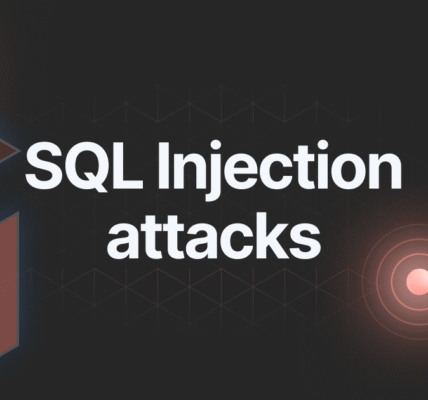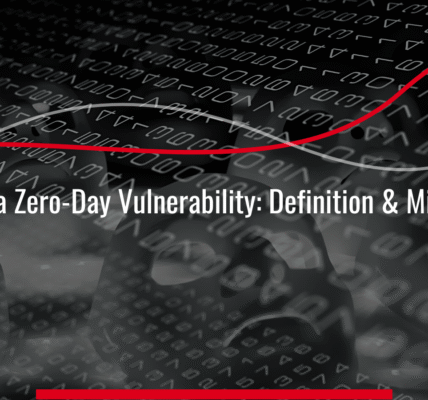What is Denial-of-Service (DoS) Attack and How to Protect Against It

A Denial-of-Service (DoS) attack is one of the most well-known and disruptive types of cyberattacks. The main goal of a DoS attack is to prevent legitimate users from accessing a service, website, or network by overwhelming the targeted system with an excessive amount of traffic or by exploiting its vulnerabilities. This can lead to significant disruptions, financial losses, and damage to an organization’s reputation.
In this post, we will explore what a DoS attack is, the different types of DoS attacks, and the best practices to protect your systems from these types of attacks.
What is a Denial-of-Service (DoS) Attack?
A Denial-of-Service (DoS) attack is an attempt to make a computer, network, or service unavailable to its intended users by temporarily or indefinitely disrupting its normal functioning. The attack usually works by overwhelming the target with a flood of traffic or requests, causing the system to crash, freeze, or slow down dramatically. As a result, legitimate users are unable to access the service or website, leading to disruptions in business operations.
DoS attacks can be executed using a variety of methods, such as flooding a website with excessive traffic or exploiting vulnerabilities within the software or hardware. There is also a more advanced form of DoS attack known as Distributed Denial-of-Service (DDoS), where the attack is carried out from multiple systems simultaneously, making it more difficult to mitigate.
How Do Denial-of-Service (DoS) Attacks Work?
DoS attacks generally operate by overwhelming a server or network with excessive traffic or exploiting vulnerabilities that cause the server to crash or become unresponsive. Common DoS methods include:
1. Flood Attacks
Flood attacks are the most common type of DoS attack. In these attacks, the target is flooded with a massive volume of traffic or requests. The goal is to overwhelm the server’s resources (such as CPU, memory, or bandwidth), causing it to slow down, crash, or become unresponsive.
- HTTP Flood: Involves sending legitimate-looking HTTP requests to a server, overloading the system.
- ICMP Flood (Ping of Death): Involves sending multiple ICMP (Internet Control Message Protocol) packets, which are used for network diagnostic purposes, to overwhelm a server.
- SYN Flood: Targets the process in which a server establishes connections with clients, sending incomplete requests to exhaust system resources.
2. Amplification Attacks
Amplification attacks involve using a third-party server to send large amounts of traffic to the target. The attacker sends small requests to the third-party server, which then sends much larger responses to the target. This amplifies the scale of the attack, making it more difficult for the target to handle.
- DNS Amplification Attack: The attacker sends small DNS queries to a public DNS resolver, which then sends large responses to the victim’s IP address.
- NTP Amplification: Similar to DNS amplification, but using the Network Time Protocol (NTP) to flood the target with traffic.
3. Resource Exhaustion
This type of attack targets specific vulnerabilities in the system to exhaust available resources, such as CPU, memory, or disk space. The attacker sends specially crafted requests that consume resources, eventually leading to a crash or denial of service.
4. Application Layer Attacks
Application layer attacks aim to exploit the weaknesses of web applications and services. Unlike traditional flooding attacks, which target network infrastructure, these attacks specifically target vulnerabilities within application protocols and services.
- Slowloris: Involves sending incomplete HTTP requests to a server and keeping the connections open, thereby exhausting server resources.
- RUDY (R-U-Dead-Yet): A type of application layer DoS attack that sends a low volume of traffic but keeps connections open for as long as possible, causing server resources to be exhausted.
Denial-of-Service (DoS) vs. Distributed Denial-of-Service (DDoS)
While a DoS attack is launched from a single source, a Distributed Denial-of-Service (DDoS) attack takes it a step further by using multiple systems, often spread across the world, to launch the attack. DDoS attacks are far more difficult to stop because the incoming traffic comes from many different IP addresses, making it difficult to differentiate between legitimate and malicious traffic.
DDoS attacks are often carried out using a network of compromised devices, known as a botnet, which the attacker controls remotely. These botnets can consist of thousands or even millions of compromised devices, making the attack scale massive and difficult to mitigate.
The Impact of Denial-of-Service (DoS) Attacks
The consequences of a DoS attack can be severe, especially for businesses that rely heavily on online services. Some of the key impacts include:
1. Downtime and Service Disruption
The primary objective of a DoS attack is to make a service unavailable. This can result in significant downtime, affecting users’ ability to access websites, applications, or services, which could lead to loss of business revenue.
2. Loss of Customer Trust
A prolonged DoS attack can frustrate users and customers who rely on the service for important tasks. If customers are unable to access your site or services, it can lead to a loss of trust in your company and a decline in customer loyalty.
3. Financial Loss
Downtime and service disruptions can result in financial losses due to the inability to process transactions or serve customers. Additionally, mitigation efforts to restore service can incur significant costs.
4. Reputation Damage
Frequent or prolonged downtime due to DoS attacks can damage an organization’s reputation. Customers may move to competitors if they perceive the organization’s services as unreliable or insecure.
How to Protect Against Denial-of-Service (DoS) Attacks
1. Use a Content Delivery Network (CDN)
A Content Delivery Network (CDN) can help mitigate DoS attacks by distributing website traffic across multiple servers. CDNs can absorb high volumes of traffic and filter malicious traffic before it reaches the origin server, reducing the risk of a successful DoS attack.
2. Implement Web Application Firewalls (WAF)
A Web Application Firewall (WAF) can help detect and block DoS attacks, particularly at the application layer. A WAF sits between the web server and the internet, filtering out malicious requests and allowing legitimate traffic to pass through.
3. Rate Limiting
Implementing rate limiting can help prevent DoS attacks by limiting the number of requests a user can make within a specific time frame. This can help mitigate flooding attacks by blocking requests from sources that exceed normal traffic limits.
4. Use Anti-DDoS Services
Anti-DDoS services, such as Cloud-based DDoS protection, can help mitigate large-scale attacks. These services are designed to absorb and redirect malicious traffic, ensuring that your server remains operational even under heavy attack.
5. Redundancy and Load Balancing
By using redundant servers and load balancing, you can distribute traffic across multiple servers to reduce the risk of a single point of failure. This can make it more difficult for attackers to overwhelm your system.
6. Monitor Traffic and Set Alerts
Regularly monitoring traffic patterns can help you detect unusual spikes in traffic that may indicate the early stages of a DoS attack. Setting up automated alerts can help you respond quickly to potential threats.
7. Use Intrusion Detection and Prevention Systems (IDPS)
An Intrusion Detection and Prevention System (IDPS) can help detect abnormal traffic patterns that are characteristic of DoS attacks. An IDPS can also take action to block or mitigate attacks in real-time.
Conclusion
Denial-of-Service (DoS) attacks are a serious threat to web applications, networks, and services. Understanding how these attacks work, their impact, and the best practices for protection is crucial for securing your organization against potential disruptions. By implementing robust security measures like CDNs, WAFs, DDoS protection, and monitoring tools, you can significantly reduce the risk of falling victim to DoS attacks and ensure the availability and reliability of your services.
If you’re looking to protect your website from DoS and DDoS attacks, CyberVolt provides comprehensive security solutions to safeguard your infrastructure and data from malicious threats. Contact us today for expert security assessments and solutions to ensure your digital assets are always safe.
FAQs on Denial-of-Service (DoS) Attacks
Q: Can a DoS attack be completely prevented?
While it’s difficult to guarantee complete protection, implementing multiple layers of security, including firewalls, DDoS mitigation services, and traffic monitoring, can significantly reduce the likelihood of a successful DoS attack.
Q: How can I tell if my website is under a DoS attack?
Signs of a DoS attack include slow or unresponsive websites, sudden spikes in traffic, or users reporting that they cannot access your website or services.
Q: How does a DDoS attack differ from a DoS attack?
While a DoS attack originates from a single source, a DDoS (Distributed Denial-of-Service) attack is launched from multiple compromised systems, making it more difficult to mitigate and more damaging in scale.
Protect your business from DoS attacks with CyberVolt’s advanced security solutions. Reach out for a free consultation today and safeguard your online assets against malicious threats!




